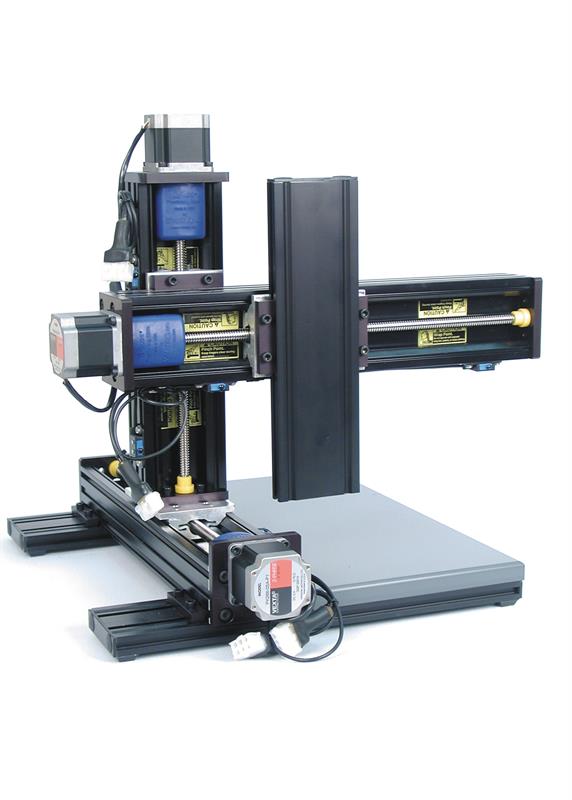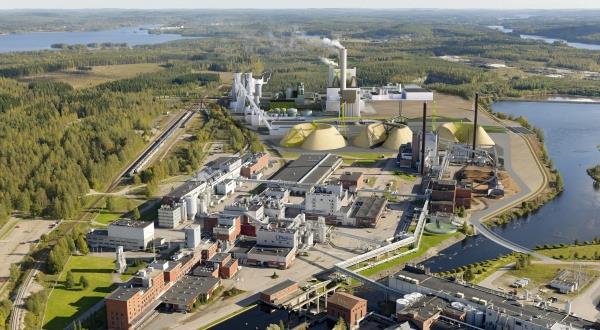With the rise in the efficiency of motors in recent years driven by legislation, is there a time when the drive could be made redundant due to more complex programmable logic controllers (PLCs)? Or, is there a perfect combination - the Holy Grail - for combining motors, drives and PLCs?
Andrew Stephenson, managing director at NORD Drivesystems UK, said: “When designing or operating machines it makes sense to use a drive system that gives the machine the required performance at the lowest operating cost. However, does using the highest efficiency motor with a converter (drive) really give you the lowest running costs? Are there any other elements in the drive system that should be considered? Of course the answer is that it depends on the performance requirements of the machine that is to be driven.”
Drives allow real-time management of a system but are not particularly flexible. On the other hand PLCs enable multi-domain functionality — including logic, motion, HMI and process control — giving a greater range of control.
Jonathan Smith, field business leader, drives at Rockwell Automation, said: “Will drives be removed from the equation? Not in my opinion. In fact, I think they will get more imperative as time goes on.”
Smith says that adding a drive to a motor or PLC may reduce the motor’s efficiency by 2 or 3%, but allows more control, increasing the overall efficiency of the drive system. He also explained all three can be interlinked to complement each other.
Stephenson warned that the use of a PLC depends on the application it is being used for. “If the application doesn’t require variable speed and the load is constant then in reality you have worse efficiency by adding a converter or PLC.”
This is a view echoed by Vasi Karhinen, managing director of ABB Technology: “Simple, low power applications generally only need a motor to control them, because it is just a case of switching the process on or off.
“You would use a frequency converter where you need to optimise the acceleration and deceleration of the motor. This saves a lot of energy each time the motor starts and stops, typically around 40 to 50%.”
For applications where the load varies or where external mechanical baffles or valves and chokes are used to maintain pressure or flow then it is ideal for a PLC to be incorporated. They can reduce the energy used by automatically reducing the torque or speed to suit the application requirements derived from the inverters own current monitoring and/or functions such as internal PI control. The PLC can also provide basic functions such as soft start which again aids energy efficiency.
Stephenson said: “The use of inverter drives to achieve energy efficiency savings has been prolific. In a huge amount of cases, especially fan and pump applications, energy savings as high as 50% can be achieved.”
The focus of development in drive systems turns out to be the motor.
Karhinen said: “At ABB we are looking to increase the overall efficiency of our motors, especially in Europe due to the International Efficiency (IE) ratings. From IE3 to IE4 there has been a big leap in motor efficiency, and IE5 is coming out shortly. If you have the most efficient motor it doesn’t really matter how efficient the controller is as it doesn’t affect the overall efficiency that much.”
NORD offers a different perspective: “At NORD we are looking at ‘what does a field device look like going forward?’” Stephenson explained. “With both technologies interlinked you not only control the motor through a command-based approach, you can control it through an instruction-based approach. You can also control position. So the lines are being blurred more between a drive and a motion controller.”
With an integrated drive and controller system capable of programmable commands, a load can be moved without the need for multiple sensors. This could potentially lower the cost of the system, while increasing its flexibility.
“Going forward we see that, rather than being omitted from designs altogether, drives will only be able to operate with a PLC in complex systems that require the movement of a load, for example,” Stehenson concluded.
When designing or incorporating drive systems many aspects need to be considered depending on the type of function the system will carry out, from fans and pumps to HVAC or production lines. The advice from Stephenson is that providing a machine’s performance requirements to a drive supplier will achieve the best solution. He said: “Request a breakdown and documented analysis for the selection - and if you’re not convinced then get a second opinion.”
Small-scale case study: Spray deposition positioning system
The objective was to provide a cost-competitive mechanical positioning and motion control system that would cover a scanned area of 300 x 300 x 200mm. The integrated modular system’s specification called for relatively low speeds, low duty cycle and medium precision to perform the required scanning with a load of up to 3kg. An open loop stepper motor based positioning system was used based on LG Motion’s linear dovetail slides, the XSlide range. LG Motion also provided a simple GUI front-end program that is said to allow simple entry of scan patterns and spray timings without the need to program which gives easier and more consistent testing. The Arcus Technology PMX-4ET-SA was selected as an advanced 4-axis motion controller and stepper drive providing linear and circular axis interpolation, a 6MHz step and direction pulse rate for smooth and fine resolution microstepping combined with fast synchronising inputs and outputs for the coordination of motion and external events required for the application. Flexibility in system design was a crucial deciding factor for the choice of the LG Motion system. The mechanical assembly is modular and the Arcus controller provides quick and simple programming. This flexibility in turn allows Oxford Materials to adapt the system as the research project develops, including the ability to add encoder feedback for position verification should there be a requirement to increase the system repeatability in the future. |
Large-scale case study: ABB to power the world’s most energy-efficient pulp mill
ABB has signed a contract to supply the complete power and process electrical systems for Metsä Group’s bioproduct mill in Äänekoski, Finland, opening in 2017. The mill will produce 1.3million tonnes of pulp per year and bioproducts such as tall oil, turpentine, lignin products, bioelectricity and bark-based solid fuel. Using over 1000 of the most advanced energy efficient motors, both direct on line connected motors and frequency converter controlled motors, and state-of-the-art power systems, the site is claimed to run the first ever industrial electrical network operating at 33kV. The mill will produce 2.4 times more electricity than it consumes and is designed to produce 1.8TWh of energy annually, representing 2.5% of the electricity produced in Finland today. “We are extremely happy that we can participate in the largest investment in history of the Finnish forest sector,” said Tauno Heinola, managing director of ABB in Finland. “Our products will be part of ensuring the mills’ high availability, reliability and efficient production, as well as their energy efficiency, fully in line with our company’s Next Level strategy.” |


 The University of Oxford’s Department of Materials – Oxford Materials – approached LG Motion to design and manufacture an XYZ gantry positioning and motion control system for a research project using spray deposition to manufacture film energy storage electrodes and devices.
The University of Oxford’s Department of Materials – Oxford Materials – approached LG Motion to design and manufacture an XYZ gantry positioning and motion control system for a research project using spray deposition to manufacture film energy storage electrodes and devices.



